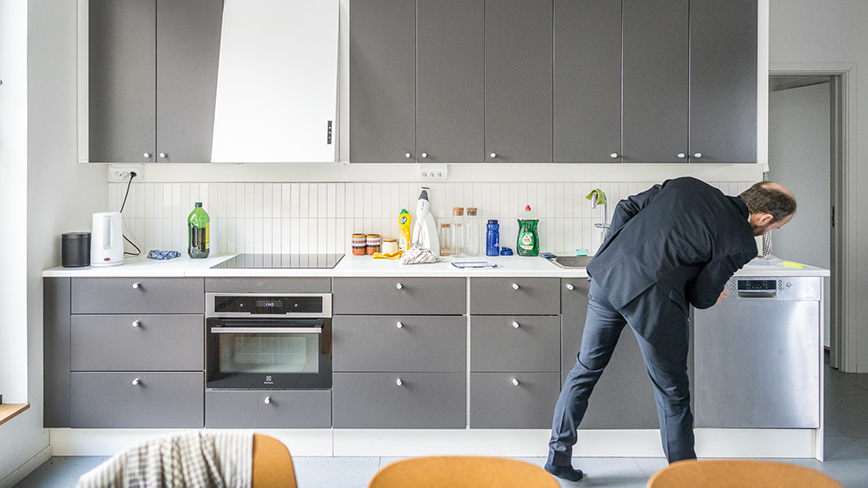KTH Live-In Lab - where tomorrow's buildings are created

At KTH Live-In Lab, new technologies are tested in real living environments in order to more quickly translate research into finished products. Through collaboration between researchers and companies, innovations are developed for the smart buildings and cities of the future.
"This is the brain of the building," says Mr Molinari, pointing to the flashing control system in the electrical cabinet in the basement room, which also serves as a research and training room.
"It controls and collects data from all systems in the building, ventilation, water, heating and IT. This information is stored in real time in a common database, which we can analyse and link together to optimise how the building is operated and managed."
Marco Molinari is a researcher and director, and in many ways the brains behind today's work at the KTH Live-In Lab. The research centre, located on the KTH Campus, currently consists of three buildings, known as test beds, where services, products and methods are tested in real living environments. Here, manufacturers can test new products or systems, architects can test new building designs, contractors and operators can investigate how to install and operate new technologies, and residents can provide feedback on day-to-day use.
"With our tests, we can minimise risks. Say you want to design a building that will last at least 50 years, you'll want to test your building technology innovation first in a protected environment where it's okay to fail. If your idea doesn't work, you can easily start again," says Marco Molinari.
Since its inception, around 50 projects have been launched
KTH Live-In Lab was initiated by Jonas Anund Vogel as a result of a donation from the construction company Einar Mattsson, with support and funding from KTH and other partners. These initiatives and collaborations have grown in scope and are of even greater importance today, according to Marco Molinari. The Einar Mattsson Group is currently involved in several ongoing research projects, including the installation of a six-tonne battery in a purpose-built technology room. The battery is connected to solar cells on the roof.
"One of the things we are looking at here is how to maximise its use. Should you use electricity when prices are low and sell the surplus when prices are high, or should you try to extend the capacity of the battery because it is an expensive investment? The electrification of buildings is a major area of research in the EU," he says.
Since its inception in 2017, around 50 projects have been launched. There are currently around 20 projects on water, energy, digitalisation and smart solutions based on real challenges in society and in the construction industry.
"Together with industry, we conduct research close to the applications. Theoretical models and tools can be tested in real environments and then scaled up. We also use this knowledge in an interdisciplinary way to create synergies across projects," says Marco Molinari.
